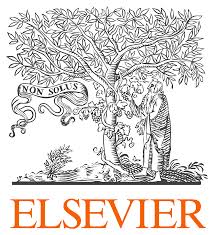Location
What is ScienceDirect
Elsevier’s leading platform of peer-reviewed scholarly literature.
University libraries and institutions offer ScienceDirect access to their communities of researchers.
Researchers, teachers, students, healthcare and information professionals use ScienceDirect to improve the way they search, discover, read, understand and share scholarly research.
Members:
Resources
Displaying 116 - 120 of 284Evaluating a collaborative decision-analytic approach to inform conservation decision-making in transboundary regions
Conservation decision-making in transboundary regions presents considerable challenges for protected area managers working in countries with differing languages, laws, and cultures. Collaborative decision analysis has informed real-world conservation decisions in non-transboundary contexts. Here we evaluate for the first time its application in two transboundary regions in Europe: Julian Alps along the Italian–Slovenian border, and the Bavarian–Bohemian Forest along the German–Czech border.
Identifying drivers of land degradation in Xilingol, China, between 1975 and 2015
Land degradation occurs in all kinds of landscapes over the world, but the drivers of land degradation vary from region to region. Identifying these drivers at the appropriate spatial scale is an essential prerequisite for developing and implementing appropriate area-specific policies. In this study, we investigate nine different driving factors in three categories: human disturbance, water condition, and urbanisation.
Revisiting forest transition explanations: The role of “push” factors and adaptation strategies in forest expansion in northern Phetchabun, Thailand
Researchers and policy makers are increasingly looking at the drivers of forest recovery (or forest transition) for inspiration in their search for win-win solutions to deforestation. However, causal generalizations regarding forest transitions are subject to significant problems. First, forest transition theory (FTT), at least in its simplest renditions, tends to emphasize socially benign processes and fails to pay sufficient attention to the causal role—and social impacts—of negative (push) dynamics.
Agroforestry creates carbon sinks whilst enhancing the environment in agricultural landscapes in Europe
Agroforestry, relative to conventional agriculture, contributes significantly to carbon sequestration, increases a range of regulating ecosystem services, and enhances biodiversity. Using a transdisciplinary approach, we combined scientific and technical knowledge to evaluate nine environmental pressures in terms of ecosystem services in European farmland and assessed the carbon storage potential of suitable agroforestry systems, proposed by regional experts.
Adoption of improved amaranth varieties and good agricultural practices in East Africa
This study quantifies the adoption of improved amaranth varieties in Kenya and Tanzania, and the extent to which these result from international vegetable breeding research conducted by the World Vegetable Center (WorldVeg) and partners. The study used expert elicitation and a questionnaire survey among vegetable seed producers. Nine expert panels were conducted involving 123 local experts. The results show that improved amaranth varieties were planted on 51% of the planted area in Kenya and 70% in Tanzania.


